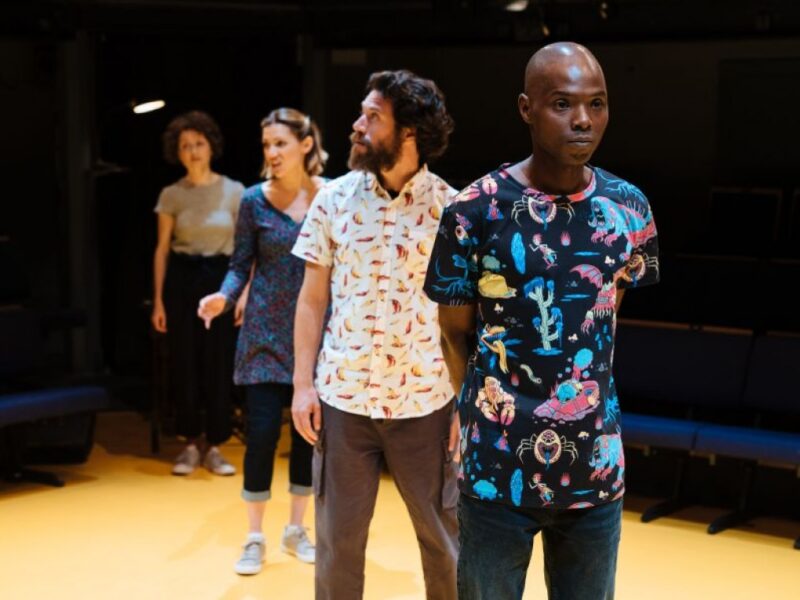Insights from the industry
In our podcasts, we speak with a number of UK artists and organisations to discuss their creative process.
We ask them to share insights into how they develop their digital work, how they find an audience and, importantly, ask them to outline lessons learnt throughout the process.
Each podcast features a Space team member and audio producer Clare Freeman in conversation with a range of innovative artists.

Click to listen…
Jan Williams, The Caravan Gallery
Jan Williams, along with partner Chris, runs The Caravan Gallery which records the reality and surreality of everyday life. They specialise in using colour photography that celebrates everyday life and engage people and places that ‘normal’ galleries might not easily reach. Jan explains how they embed themselves within communities and how they build strong connections within the communities in which they work. ‘Make friends with caretakers, cleaners, traffic wardens…put yourself out there.’
Sajida Carr, Creative Black Country
Sajida Carr is Director of Operations and Development at Creative Black Country (CBC). The organisation works with communities in Dudley, Sandwell, Walsall and Wolverhampton to explore and develop new creative projects with local people in the places where they live. Sajida shares tips on how CBC use digital and analogue as a two-pronged approach, the role of the enabler and facilitator in community lead projects and how their local community advisors keep them connected to the local area.
Choreographer Corey Baker
Corey Baker, is a classical and contemporary choreographer, and former dancer from New Zealand. In this episode, Corey explains how an idea he had in the shower went on to be commissioned as part of BBC Art’s 2020 Culture in Quarantine project and watched by millions all over the world.
Musician Soumik Datta
Sharing the lessons learnt during his first exploration into radio and podcasting, sarod player Soumik details how his music video series ‘Sounds of Silence’ explores the impact of lockdown on musicians across the UK.
Hospital Rooms Curator Niamh White
Hospital Rooms’ digital video series unveils the stories behind the artwork created in some of the UK’s most challenging mental health settings. Curator, Niamh White explains the inspiration behind their film series and workshops, and how a “little digital adventure” they went on with their Space supported project has become the backbone to their business.
Theatre Uncut Director Emma Callander
‘Bubble’ is a play set on Facebook, written in texts and emojis. The audience watches the drama unfold as a cast of youngsters who never met the show’s directors act out their responses via social media. Theatre Uncut co-artistic director Emma Callander explains the pros and cons of reaching a younger audience on a digital platform. Plus, wider reflections on what theatre’s role is during a pandemic.
Breach Theatre Writer and Director Billy Barrett
Billy and his team at Breach Theatre turned their three-woman theatre-show It’s True, It’s True, It’s True into a digital film, which aired on BBC Four, and was hosted on the National Gallery website which helped Breach reach a new audience. Billy explains to Fiona and Clare what challenges the team faced stepping into a digital world and how they discovered partnerships were the key to successful distribution.
Disability Arts Consultant and Artistic Director of Extant Maria Oshodi
Providing opportunities and a platform for disabled artists has been a personal and professional quest of Maria Oshodi. Here Maria details the challenges Extant overcame in creating accessible digital content with their Space supported project, Flight Paths – and the unexpected freedom that emerged from working off-stage.
Robert Howell, Culturepedia
Robert Howell is from Lancashire-based Culturapedia. The organisation engages its audiences in cultural offerings online, outdoors and on their doorsteps. Robert talks about building communities, working in micro communities and the importance of community ownership. He also describes how he measures success during a digital project, his understanding of what digital poverty really means and how the organisation has embraced digital technology.

